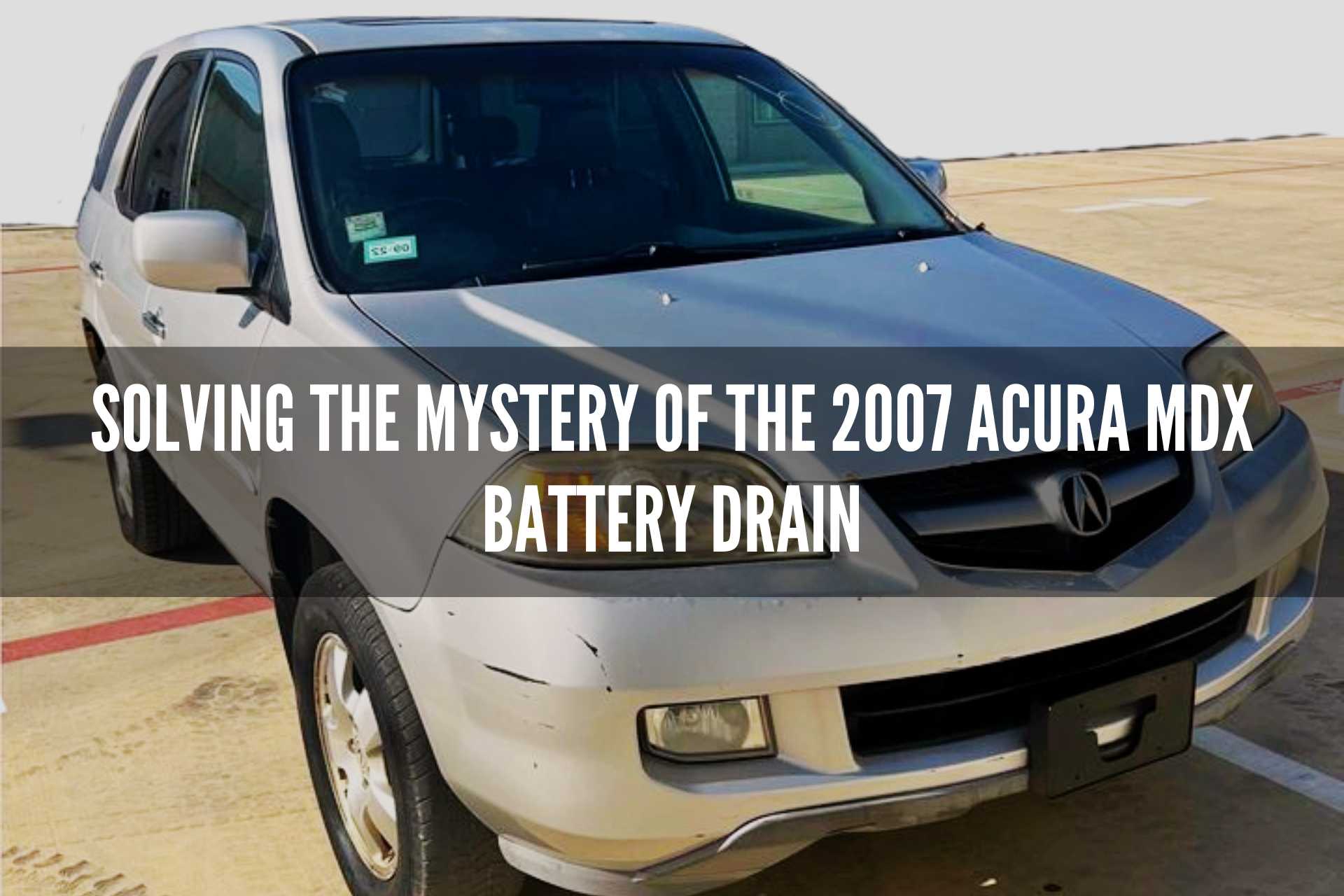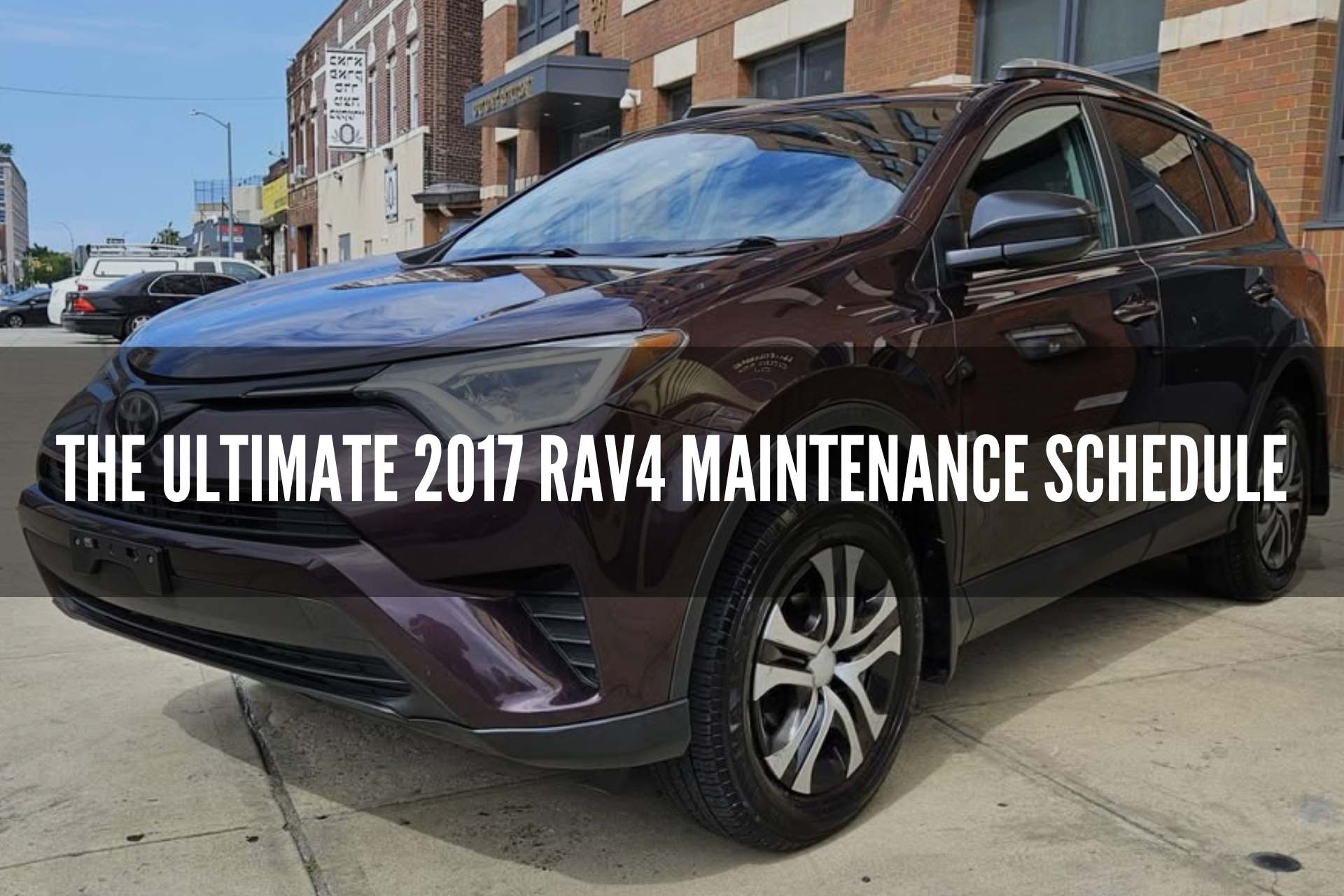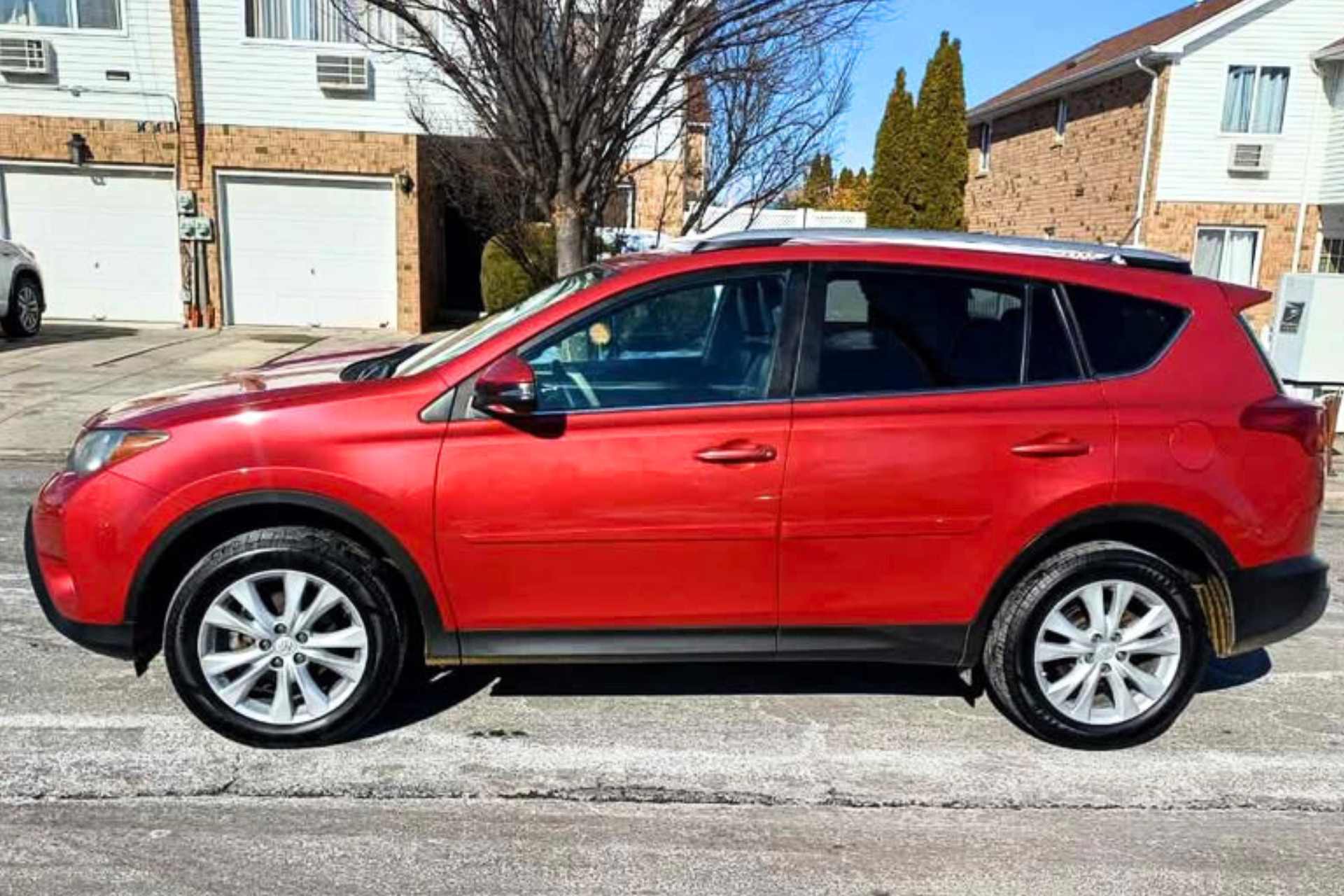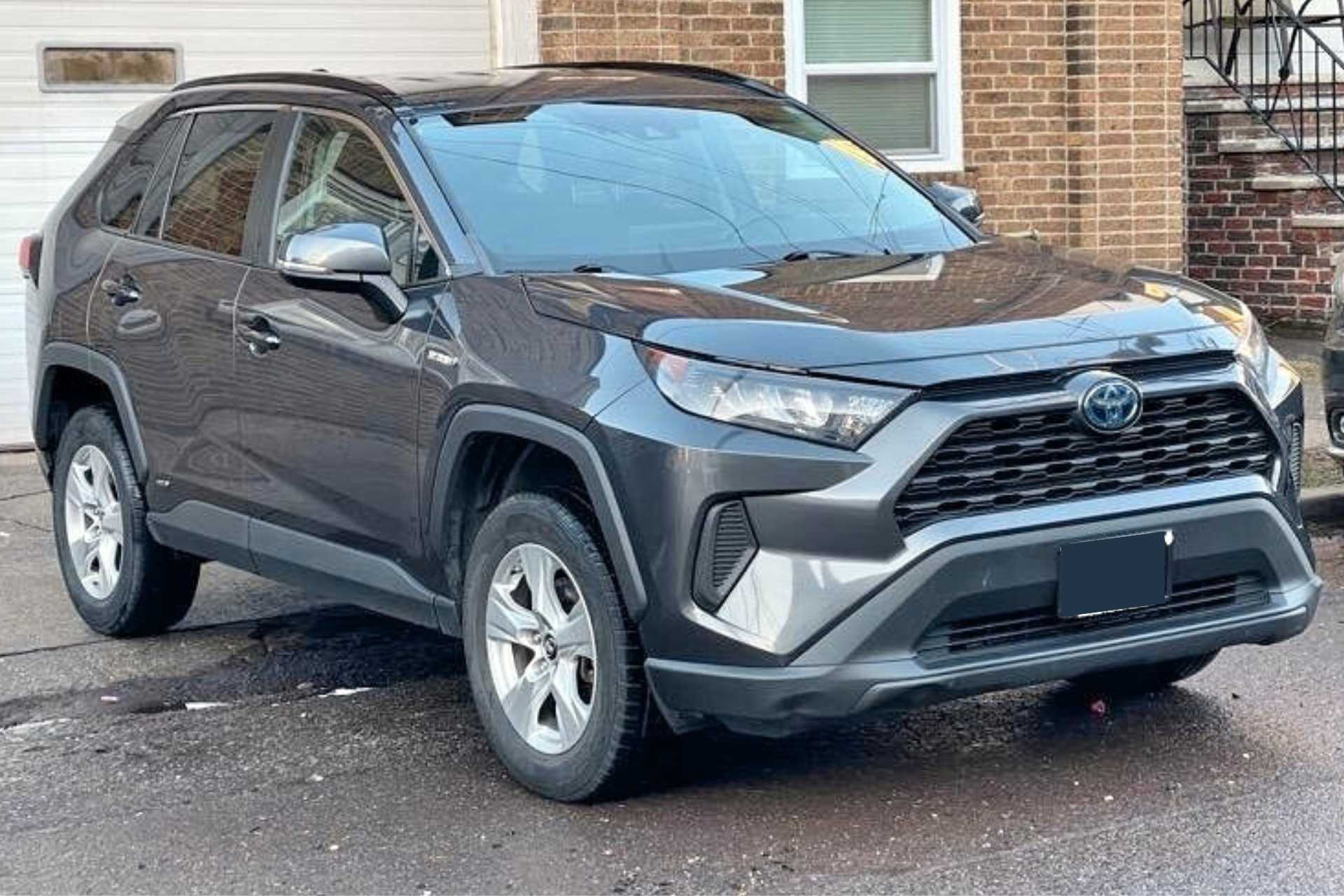Maintenance
Solving the Mystery of the 2007 Acura MDX Battery Drain

In this article, we will delve into the common issue of battery drain in the 2007 Acura MDX. Many MDX owners have reported experiencing this frustrating problem, where their vehicle’s battery unexpectedly dies, leaving them stranded. We will explore the possible causes of this battery drain and provide solutions to help you get back on the road without any further interruptions.
What could be causing the battery drain in my 2007 Acura MDX?
One of the primary reasons for battery drain in the 2007 Acura MDX is a parasitic draw. This means that there is a continuous power drain on the battery even when the vehicle is turned off. Common culprits include malfunctioning electrical components such as the radio, interior lights, or even the vehicle’s alarm system. Another possible cause could be a faulty alternator that is not properly charging the battery while the vehicle is running.
To pinpoint the exact cause of the battery drain, it is recommended to conduct a parasitic draw test using a multimeter. This test will help you identify which component is drawing excessive power from the battery when the vehicle is not in use.
How can I fix the battery drain issue in my 2007 Acura MDX?
If the parasitic draw test reveals a specific component causing the battery drain, you can start by checking and repairing or replacing that faulty part. For example, if the radio is drawing excessive power, you may need to have it repaired or replaced by a professional. Additionally, make sure all electrical components are turned off when the vehicle is not in use to prevent unnecessary power drain.
It is also advisable to have the alternator tested to ensure it is functioning properly and charging the battery adequately. If the alternator is faulty, it may need to be replaced to prevent further battery drain issues. Regular maintenance of your vehicle’s electrical system can also help prevent future battery drain problems.

What are some preventive measures to avoid battery drain in the 2007 Acura MDX?
One way to prevent battery drain in your 2007 Acura MDX is by periodically checking the condition of the battery and replacing it if needed. Old or weak batteries are more susceptible to drainage issues, so it is essential to ensure your battery is in good condition. Additionally, avoid leaving electrical components running when the vehicle is turned off, as this can contribute to excessive power drain.
Regularly inspecting and maintaining your vehicle’s electrical system, including the wiring and connections, can help prevent unexpected battery drain. If you notice any signs of electrical issues, such as dimming lights or slow cranking, it is crucial to address them promptly to avoid more severe problems in the future.
How can I jump-start my 2007 Acura MDX if the battery dies due to drain?
If your 2007 Acura MDX‘s battery dies due to excessive drain, you can jump-start the vehicle using jumper cables and a second vehicle with a charged battery. Begin by connecting the positive (+) and negative (-) terminals of the batteries using the jumper cables, ensuring a secure connection. Start the second vehicle and let it run for a few minutes to charge the dead battery. Once the battery has sufficient charge, attempt to start your vehicle.
If the jump-start is successful, it is advisable to drive your vehicle for a reasonable amount of time to allow the battery to recharge fully. If the battery drain issue persists, it is recommended to seek professional help to diagnose and repair the underlying problem to prevent further battery drain incidents.
Conclusion
The 2007 Acura MDX battery drain issue can be a frustrating problem for many owners, but with proper diagnosis and maintenance, it can be effectively resolved. By conducting a parasitic draw test, identifying the root cause of the drain, and implementing preventive measures, you can avoid unexpected battery issues and keep your vehicle running smoothly.
Regularly checking the condition of your battery and electrical system can help you prevent future battery drain incidents and prolong the life of your vehicle.
FAQs
Can a faulty alternator cause a battery drain in my 2007 Acura MDX?
Yes, a faulty alternator that is not properly charging the battery can contribute to battery drain issues in the 2007 Acura MDX. It is essential to have the alternator tested and replaced if necessary to prevent further battery drain incidents.
How often should I check my 2007 Acura MDX’s battery to prevent drain issues?
It is recommended to check the condition of your vehicle’s battery regularly, especially if you notice any signs of battery drain such as slow cranking or dimming lights. Periodic maintenance and inspection of the battery can help prevent unexpected drain problems.
What are some signs that indicate my 2007 Acura MDX may have a parasitic draw issue?
Common signs of a parasitic draw issue in the 2007 Acura MDX include a dead battery after the vehicle has been parked for an extended period, dimming lights, and electrical components not functioning as expected.
If you experience any of these symptoms, it is advisable to conduct a parasitic draw test to identify the root cause.
Can leaving electrical components on in my 2007 Acura MDX contribute to battery drain?
Yes, leaving electrical components such as the radio, interior lights, or alarm system running when the vehicle is turned off can contribute to excessive power drain and lead to battery issues. It is essential to ensure all electrical components are turned off when the vehicle is not in use to prevent unnecessary drain.
What should I do if my 2007 Acura MDX’s battery dies due to drain while I am on the road?
If your 2007 Acura MDX’s battery dies while you are on the road due to excessive drain, you can jump-start the vehicle using jumper cables and a charged battery from another vehicle. Once the battery has been jump-started, it is recommended to drive the vehicle for a reasonable amount of time to allow the battery to recharge fully.
Maintenance
The Ultimate 2017 RAV4 Maintenance Schedule

Are you a proud owner of a 2017 Toyota RAV4? Keeping up with regular maintenance is essential to ensuring your vehicle runs smoothly and stays in top condition. In this article, we will provide you with the ultimate maintenance schedule for your 2017 RAV4, so you can stay on track and keep your vehicle performing at its best.
What are the recommended maintenance intervals for my 2017 RAV4?
Toyota recommends following a specific maintenance schedule to keep your 2017 RAV4 running smoothly. Here are some of the key maintenance intervals you should be aware of:
1. Oil Change: Toyota recommends changing the oil in your 2017 RAV4 every 5,000 miles or every six months, whichever comes first. Regular oil changes are crucial to the health of your engine.
2. Fluid Checks: It’s important to regularly check and top up essential fluids such as coolant, brake fluid, and power steering fluid. These checks should be done every 10,000 miles.

How often should I rotate my tires?
Tire rotation helps to ensure even wear and prolong the life of your tires. Toyota recommends rotating the tires on your 2017 RAV4 every 5,000 to 7,500 miles, or as needed based on your driving habits.
Proper tire maintenance is essential to your vehicle’s safety and performance, so be sure to keep up with regular tire rotations.
What oil is recommended for a Toyota RAV4?
-
Oil Type
SAE 0W-20 (synthetic oil) -
Oil Specification
Meets or exceeds API SN / SM or ILSAC GF-5 -
Preferred Brand
Toyota recommends using Toyota Genuine Motor Oil or an equivalent high-quality synthetic oil.
Oil Capacity (with filter)
-
2.5L 4-cylinder engine (2AR-FE)
Approximately 4.6 quarts (4.4 liters)
What other maintenance tasks should I prioritize for my 2017 RAV4?
In addition to the regular maintenance tasks mentioned above, there are a few other key areas to pay attention to in your 2017 RAV4:
1. Engine Air Filter Replacement:
The air filter makes sure clean air goes into the engine. If the filter is dirty or blocked, the engine won’t get enough air. This can reduce fuel efficiency and performance.
You should replace the air filter every 30,000 to 45,000 miles.
If you drive in dusty areas or take short trips often, check it more frequently.
2. Brake System Inspection:
The brake system is one of the most important safety parts of your vehicle.
You should regularly check:
Brake pads
Brake rotors
Brake fluid level
Doing this helps you:
Avoid sudden failures
Replace parts before they are too worn out
Stay safe on the road
It’s a good idea to inspect the brakes every 10,000 miles or every third oil change

Complete Maintenance Schedule – 2017 Toyota RAV4
Every 5,000 miles / 6 months
- Change engine oil and oil filter
- Check and top up fluids (brake, coolant, windshield washer, etc.)
- Inspect tires and adjust tire pressure
- Rotate tires (front to back)
- Check brakes
- Inspect lights, wipers, and battery
Every 15,000 miles / 12 months
- Replace cabin air filter (for AC)
- Inspect brake lines and hoses
- Inspect steering and suspension system
- Inspect exhaust system
Every 30,000 miles / 2–3 years
- Replace engine air filter
- Replace transmission fluid (if needed, based on driving conditions)
- Inspect fuel lines and connections
- Inspect drive belts
Every 45,000 miles
- Replace spark plugs (for gas engines)
- Inspect ignition system
- Replace brake fluid (recommended every 3 years)
Every 60,000 miles
- Inspect or replace the coolant (engine antifreeze)
- Check battery condition (may need replacement)
Every 90,000–100,000 miles
- Replace transmission fluid (if not done earlier)
- Inspect/replace PCV valve
- Inspect suspension and underbody thoroughly
- Replace serpentine belt (if worn or cracked)
Additional Important Tasks
- Brake Inspection – Check regularly (every 10,000 miles or once a year)
- Battery Check – Test battery during oil changes or before winter
- Tire Alignment – Check if the car pulls to one side or tires wear unevenly
- Check for Recalls – Visit Toyota’s website to check for open recalls

How can I stay on top of my 2017 RAV4 maintenance schedule?
Staying on top of your 2017 RAV4 maintenance schedule is easy when you follow these simple tips:
1. Keep a maintenance log: Record all maintenance tasks performed on your vehicle, including oil changes, tire rotations, and fluid checks.
2. Follow the manufacturer’s recommendations: Toyota provides a detailed maintenance schedule in your owner’s manual, so be sure to follow it closely.
Conclusion
By following the ultimate 2017 RAV4 maintenance schedule outlined in this article, you can ensure that your vehicle stays in top condition and continues to perform at its best. Regular maintenance is key to extending the life of your RAV4 and avoiding costly repairs down the line.
Frequently Asked Questions
1. How often should I change the oil in my 2017 RAV4?
Toyota recommends changing the oil in your 2017 RAV4 every 5,000 miles or every six months, whichever comes first. Regular oil changes are crucial to the health of your engine.
2. How often should I rotate my tires?
Tire rotation should be done every 5,000 to 7,500 miles on your 2017 RAV4, or as needed based on your driving habits. This helps ensure even wear and prolong the life of your tires.
3. When should I replace the engine air filter in my 2017 RAV4?
The engine air filter should be replaced every 30,000 to 45,000 miles in your 2017 RAV4 to ensure optimal engine performance.
4. How often should I have my brakes inspected?
It is recommended to have your brakes inspected regularly on your 2017 RAV4 to ensure they are in good working condition and to prevent any potential safety hazards.
5. How can I keep track of my maintenance schedule?
Keeping a maintenance log and following the manufacturer’s recommendations in your owner’s manual are two simple ways to stay on top of your 2017 RAV4 maintenance schedule.
Maintenance
Exploring the Optimal Tire Size for 2016 Toyota RAV4

In this article, we will explore the optimal tire size for your 2016 Toyota RAV4. We will discuss how the right tire size can impact your vehicle’s performance, fuel efficiency, and overall driving experience. By the end of this article, you will have a better understanding of how to choose the best tires for your RAV4.
What factors should I consider when choosing a tire size for 2016 toyota RAV4 ?
When selecting the ideal tire size for your RAV4, there are several important factors to keep in mind. One of the most crucial considerations is the manufacturer’s recommended tire size for your specific vehicle model. This information can typically be found in your RAV4’s owner’s manual or on a sticker located on the driver’s side door jamb. It is essential to adhere to these recommendations to ensure optimal performance, safety, and compatibility with your vehicle.

Additionally, you should consider the type of driving you do most frequently. If you primarily drive on highways or smooth roads, a different tire size may be suitable compared to if you frequently navigate rough terrain or off-road conditions. The climate and weather conditions in your area should also play a role in your tire size selection, as certain sizes may provide better traction and handling in different environments.
How does tire size impact my 2016 Toyota RAV4’s performance?
The tire size you choose can have a significant impact on your RAV4’s performance in various ways. The diameter and width of the tire can affect the vehicle’s handling, braking, and acceleration capabilities. A larger tire size may provide improved traction and stability, particularly when driving in adverse conditions or off-road terrain. However, larger tires can also result in decreased fuel efficiency and a rougher ride.
Conversely, smaller tires may offer better fuel economy and a smoother ride, but they may sacrifice some traction and handling capabilities. It is essential to strike a balance between performance, efficiency, and comfort when selecting the optimal tire size for your RAV4.
What are the potential drawbacks of choosing the wrong tire size for my 2016 Toyota RAV4?
Selecting the wrong tire size for your RAV4 can lead to a variety of potential drawbacks. Inconsistent tire sizes can impact your vehicle’s handling and stability, potentially leading to unsafe driving conditions. Inadequate traction and grip can result in reduced braking performance and increased risk of accidents, particularly in hazardous weather conditions.

Moreover, choosing a tire size that is incompatible with your RAV4’s specifications may void your vehicle’s warranty and compromise its overall performance and longevity. It is crucial to consult with a professional mechanic or tire specialist to ensure you select the appropriate tire size for your specific vehicle model.
How can I determine the optimal tire size for my 2016 Toyota RAV4?
To determine the optimal tire size for your RAV4, it is recommended to consult with a certified mechanic or tire professional. They can assess your driving habits, vehicle specifications, and environmental factors to recommend the most suitable tire size for your needs. Additionally, you can refer to your RAV4’s owner’s manual or contact the manufacturer for specific recommendations.
It is crucial to consider factors such as diameter, width, and aspect ratio when selecting a tire size, as these elements can affect your vehicle’s performance and safety. By investing in the right tire size for your RAV4, you can improve your driving experience and ensure optimal performance and longevity for your vehicle.
Conclusion
In conclusion, choosing the optimal tire size for your 2016 Toyota RAV4 is essential for maintaining performance, safety, and overall driving experience. By considering factors such as manufacturer recommendations, driving habits, climate conditions, and professional advice, you can select the best tire size for your specific needs. Investing in the right tires can enhance your RAV4’s handling, traction, and efficiency, ultimately improving your driving experience.
https://www.youtube.com/watch?v=20Q-jEYoTqY&pp=ygUrT3B0aW1hbCBUaXJlIFNpemUgZm9yIFlvdXIgMjAxNiBUb3lvdGEgUkFWNA%3D%3D
FAQs
1. Can I install larger tires on my 2016 Toyota RAV4 without causing any issues?
It is not advisable to install significantly larger tires on your RAV4, as this can impact your vehicle’s performance, handling, and safety. It is recommended to adhere to the manufacturer’s recommended tire size to ensure compatibility and optimal performance.
2. Will changing my tire size affect my RAV4’s fuel efficiency?
Yes, changing your tire size can impact your RAV4’s fuel efficiency. Larger tires may result in decreased fuel economy due to increased rolling resistance, while smaller tires may offer improved efficiency but sacrifice some handling capability. It is essential to consider the trade-offs between performance and efficiency when selecting a tire size.
3. How often should I replace my tires on my 2016 Toyota RAV4?
The frequency of tire replacement depends on various factors, including driving habits, road conditions, and tire maintenance. It is recommended to inspect your tires regularly for signs of wear and tear and replace them when they reach the end of their lifespan. Consult with a professional mechanic for guidance on tire replacement intervals.
4. Can I mix different tire sizes on my RAV4?
It is not advisable to mix different tire sizes on your RAV4, as this can lead to uneven wear, handling issues, and potentially unsafe driving conditions. It is recommended to install a complete set of tires with the same specifications to ensure optimal performance and safety.
5. How can I tell if my tire size is compatible with my 2016 Toyota RAV4?
To determine if a tire size is compatible with your RAV4, it is essential to consider factors such as diameter, width, and load capacity. Consult with a professional mechanic or refer to your vehicle’s owner’s manual for specific recommendations on compatible tire sizes for your RAV4.
Maintenance
Owners Report Common 2017 Toyota RAV4 Hybrid Problems

In this article, we will discuss the common problems that owners of the 2017 Toyota RAV4 Hybrid have reported. If you own this vehicle or are considering purchasing one, it’s important to be aware of these potential issues so you can make an informed decision.
What are the most common problems reported by owners of the 2017 Toyota RAV4 Hybrid?
One common issue that owners have reported with the 2017 Toyota RAV4 Hybrid is problems with the hybrid powertrain. Some owners have experienced issues with the hybrid system not functioning properly, leading to decreased fuel efficiency and overall performance. Another common problem is with the transmission, with some owners reporting issues with shifting and rough gear changes.
Owners have also reported problems with the electrical system in the 2017 Toyota RAV4 Hybrid. Some have experienced issues with the infotainment system, including freezing screens and connectivity problems. Additionally, there have been reports of issues with the power windows and locks not working properly.

How can these problems be addressed?
If you are experiencing issues with the hybrid powertrain in your 2017 Toyota RAV4 Hybrid, it’s important to have it looked at by a certified Toyota technician. They will be able to diagnose the problem and recommend the necessary repairs. For transmission issues, it may be necessary to have the transmission serviced or replaced.
For electrical system problems, you may need to have the infotainment system updated or replaced. If you are having issues with the power windows and locks, it could be due to a faulty switch or wiring problem. A technician will be able to identify the issue and make the necessary repairs.
Are these problems covered under warranty?
Many of the issues reported by owners of the 2017 Toyota RAV4 Hybrid may be covered under the vehicle’s warranty. It’s important to check with your local Toyota dealership to see if the repairs are covered. If not, you may need to pay out of pocket for the necessary repairs.

It’s always a good idea to keep up with regular maintenance on your vehicle to prevent potential problems from arising. This includes regular oil changes, tire rotations, and fluid checks to keep your 2017 Toyota RAV4 Hybrid running smoothly.
Conclusion
Overall, the 2017 Toyota RAV4 Hybrid is a reliable and efficient vehicle, but like any car, it may experience some common problems. By being aware of these issues and addressing them promptly, you can keep your RAV4 Hybrid running smoothly for years to come.
FAQs
1. Are there any recalls on the 2017 Toyota RAV4 Hybrid?
Recalls on vehicles can happen for a variety of reasons, such as safety concerns or manufacturing defects. It’s always a good idea to check with the manufacturer or your local dealership to see if there are any recalls on your specific vehicle.
2. How can I improve the fuel efficiency of my 2017 Toyota RAV4 Hybrid?
The 2017 Toyota RAV4 Hybrid is a popular choice for families due to its spacious interior, safety features, and fuel efficiency. It provides a comfortable ride for passengers and ample cargo space for all your family’s needs.
3. Is the 2017 Toyota RAV4 Hybrid a good choice for a family vehicle?
The 2017 Toyota RAV4 Hybrid is a popular choice for families due to its spacious interior, safety features, and fuel efficiency. It provides a comfortable ride for passengers and ample cargo space for all your family’s needs.
4. How long do hybrid batteries last in the 2017 Toyota RAV4?
The hybrid battery in the 2017 Toyota RAV4 is designed to last for many years, but its lifespan can vary depending on driving habits, maintenance, and environmental factors. On average, a hybrid battery can last anywhere from 8 to 10 years.
5. What should I do if my 2017 Toyota RAV4 Hybrid is experiencing engine stalling?
If your vehicle is experiencing engine stalling, it’s important to have it looked at by a certified technician as soon as possible. Engine stalling can be caused by a variety of issues, including fuel system problems, electrical issues, or ignition problems that need to be addressed promptly.
-

 Maintenance1 year ago
Maintenance1 year agoCommon Acura MDX Transmission Problems and How to Fix Them
-

 Vehicle Technology1 year ago
Vehicle Technology1 year agoTroubleshooting the SH-AWD Light on Your Acura MDX: Common Causes and Solutions
-

 Vehicle Technology1 year ago
Vehicle Technology1 year agoTroubleshooting Your Acura MDX Car Alarm Why It Keeps Going Off
-

 Maintenance5 months ago
Maintenance5 months agoExpert Tips: How to Troubleshoot Acura MDX Noise When Accelerating
-

 Maintenance1 year ago
Maintenance1 year agoThe Ultimate Guide to Toyota Rav4 Windshield Replacement Costs
-

 Maintenance1 year ago
Maintenance1 year agoUnderstanding the Acura MDX VTM-4 Light : What Does It Mean and How to Fix It
-

 Maintenance1 year ago
Maintenance1 year ago2019 Acura MDX Owners Report Troubling Transmission Issues
-

 Maintenance9 months ago
Maintenance9 months agoKeeping Your Drive Safe: Acura MDX Check Ads System Explained



















